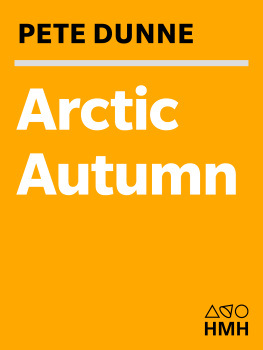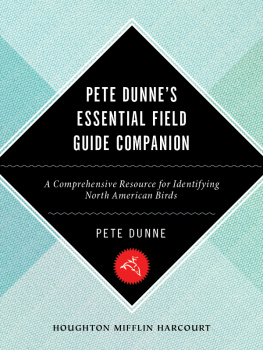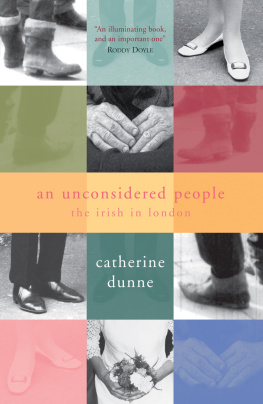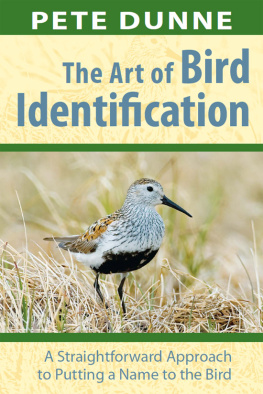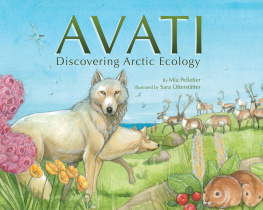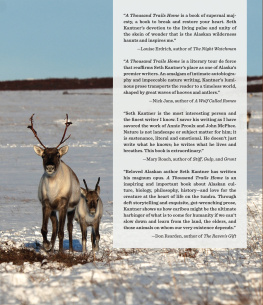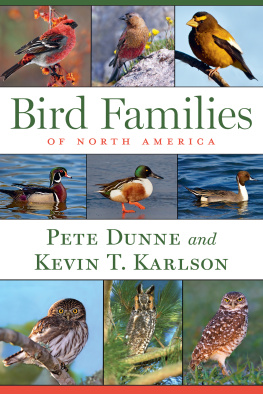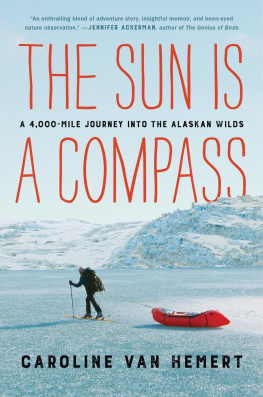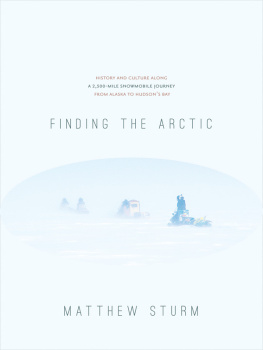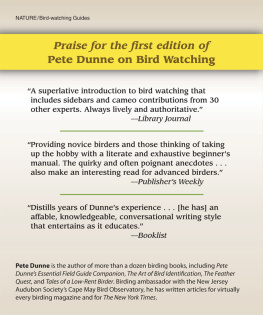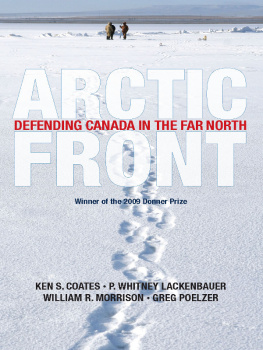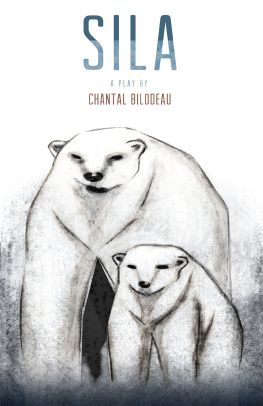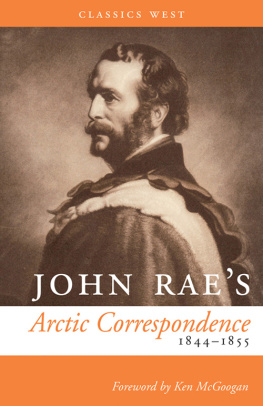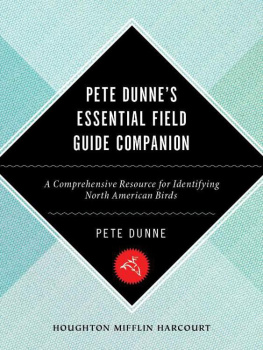Copyright 2011 by Pete Dunne
Photographs copyright 2011 by Linda Dunne
ALL RIGHTS RESERVED
For information about permission to reproduce selections from this book, write to Permissions, Houghton Mifflin Harcourt Publishing Company, 215 Park Avenue South, New York, New York 10003.
www.hmhco.com
The Library of Congress has cataloged the print edition as follows:
Dunne, Pete, date.
Arctic autumn : a journey to seasons edge / Pete Dunne.
p. cm.
ISBN 978-0-618-82221-8 (hardback)
1. Natural historyArctic regions. 2. AutumnArctic regions. I. Title.
QH 84.1. D 86 2011
508.311'3dc23 2011016051
ISBN 978-0-618-82221-8
e ISBN 978-0-547-60736-8
v2.0514
To
B OB D ITTRIOK
and
L ISA M OOREHEAD ,
for friendship
Acknowledgments
Traveling in the Arctic takes a measure of planning and doing. Were it not for the assistance of many generous and knowledgeable folks, not only would this book never have been written but it would never have been attempted.
In particular Lindas and my gratitude is extended to Nancy and Jim DeWitt, Ted Swem, Bob and Ann Ellis, and Heimo and Edna Korth, who provided food and lodging during (or between) our travels, and John Coons, and Field Guides, Inc., for accommodating our book interests during their Pond Inlet tour of 2007.
Much of the information relating to the human and natural history of the Arctic was gleaned from other sources. There are a number of very fine books written about the Arctic, but two in particular proved most valuable and inspirational. With pleasure and due recognition, I commend them to you.
The first is A Naturalists Guide to the Arctic by E. C. Pielou, essentially a backcountry bible summarizing all the extraordinary natural facets of the Arctic. The other is The Arctic Sky: Inuit Astronomy, Star Lore, and Legend by John MacDonald. This book is as fascinating as the culture it explores, and the information housed in its pages runs like a thread through this book.
I would also like to acknowledge the contribution that the online information resource, Wikipedia, made to this effort. While specific sources are referenced in the bibliography, I am compelled to express praise and gratitude for this colossal endeavora compilation of the worlds knowledge placed, very literally, at the fingertips of the planets inhabitants. Bravo!
Our travels were protracted, often requiring us to be away for weeks on end. This made extra work for my colleagues at New Jersey Audubons Cape May Bird Observatory. My appreciation, while unbounded, still falls short of their indulgence, and my gratitude to my boss, Tom Gilmore, for granting the time away from my desk, goes beyond expression.
No book that I have written in the past quarter century has been published without an earned expression of thanks to my agent, Russell Galen (and this book is no exception). And once again I am delighted to acknowledge, and thank, my editors, Lisa White and Beth Burleigh Fuller of Houghton Mifflin Harcourt and their colleagues for making all the stages of this writing project, too, such a pleasure.
Note to Readers
Most of the experiences recounted in this book occurred as a result of travels conducted between June and November 2007but not all. The raft trip on the Kongakut River recounted in Chapter 2 and the hunting trip in the Arctic National Wildlife Refuge, Chapter 7, occurred, respectively, in June 2006 and SeptemberOctober 2008 and have been included as they would have occurred following a calendar timeline.
The Arctic is a vast and logistically challenging place. Not everything we hoped to experience and include in these pages could be tucked into a single calendar year. Anyone who has traveled in the Arctic understands this. Those who still have this adventure ahead of them will understand in time.
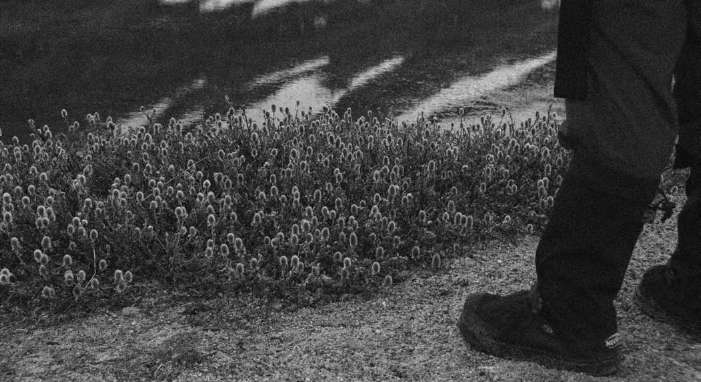
CHAPTER 1
Moon Month of Nurrait (June), Caribou Calves
Where Seasons Meet
BYLOT ISLAND, NUNAVUT, CANADA
Expressions of caution and fortune exchanged, John turned and led the rest of the members of our group back to the camp at the mouth of the creek. As arranged, Linda and I struck out on our own, heading west.
How about over there? I suggested, indicating the location of over there with a wave of my hand.
Linda looked in the direction I was gesturing, taking in the snow-covered landscape, whose physical limits were defined by a distant ridge and the sky.
What distinguishes over there from right here? she wanted to know. Coming from the member of our team burdened by thirty pounds of camera gear, it was a legitimate question and maybe one that defied a satisfactory answer. The fact was, in these early stages of the summer thaw, one part of Canadas Bylot Island looks pretty much like any otherat least any part within hiking distance.
Rising to the east were mountains whose color and pattern made them look like theyd been cast from scoops of vanilla fudge ice creambut cheap vanilla fudge. The kind where they skimp on the fudge.
To the north, bracketed by peaks, was the Aktineaq Glacier, one of the many ice sheets for which Canadas 22,252-square-kilometer Sirmilik National Park is named. Sirmilik, in the Inuktitut language of the native Inuit people, means Place of Glaciers.
To the west, somewhere beyond the visual limits of over there, was a marshy plain that serves as the nesting ground for the worlds largest breeding colony of greater snow geese.
To the south, across twenty-five frozen miles of Eclipse Sound, was Baffin Island, the largest island in the Canadian Arctic Archipelago and home to the majority of the mostly Native residents of Canadas newest, and northernmost, province, Nunavut.
There are very few places on the planet where you can look south onto Baffin Island, and, among the planets nearly 7 billion human inhabitants, only a fraction might ever have dreamed of doing so.
One of them was me. One of them was Linda. But wasnt the other one you?
Yes, you. The onetime bright and slightly bored kid slouched in one of those plastic desk chairs that ruined the backs of a whole generation. Didnt you used to sit in class and stare, wistfully, at the pull-down map of the world covering the blackboard and marvel at that patchwork of islands way up there at the top of the world?
A fragmented land whose color was no color at all. Not red or green or yellow like all the other landforms on the map but white!
Snow white. Arctic white.
Didnt you, as the disciplines that would turn us into well-adjusted and productive members of society were being instilled, study those northern lands and dream of being the adventurer every kid, deep in his heart, knows himself to be?
Sure you did. Theres a little bit of Robert Service and Admiral Peary in all of us.
And havent you, during all the responsible and productive adult years that followed, feasted upon the pages of travel and nature magazines in barbershops and hair salons (and chiropractic center waiting rooms), thrilling to images of those Arctic lands?
Polar bears cradling cubs so winsome a panda could die of envy.
Caribou herds so vast they filled whole treeless valleys and spilled into the next.
Lilliputian flowers carpeting landscapes whose limits were fixed by the sky.
And didnt you, until the receptionist called your name, rekindle those classroom ambitions and vow that somedaywhen the kids were raised, when the house was paid offyou would finally become the explorer you were meant to be and head...
Over there, I said, in answer to Lindas question, will give us a much better view to the west. It was a promise without foundation. Fact is, like you, Id never been over there either, had no freaking idea what we might find. Linda greeted this explanation with silence.
Next page
